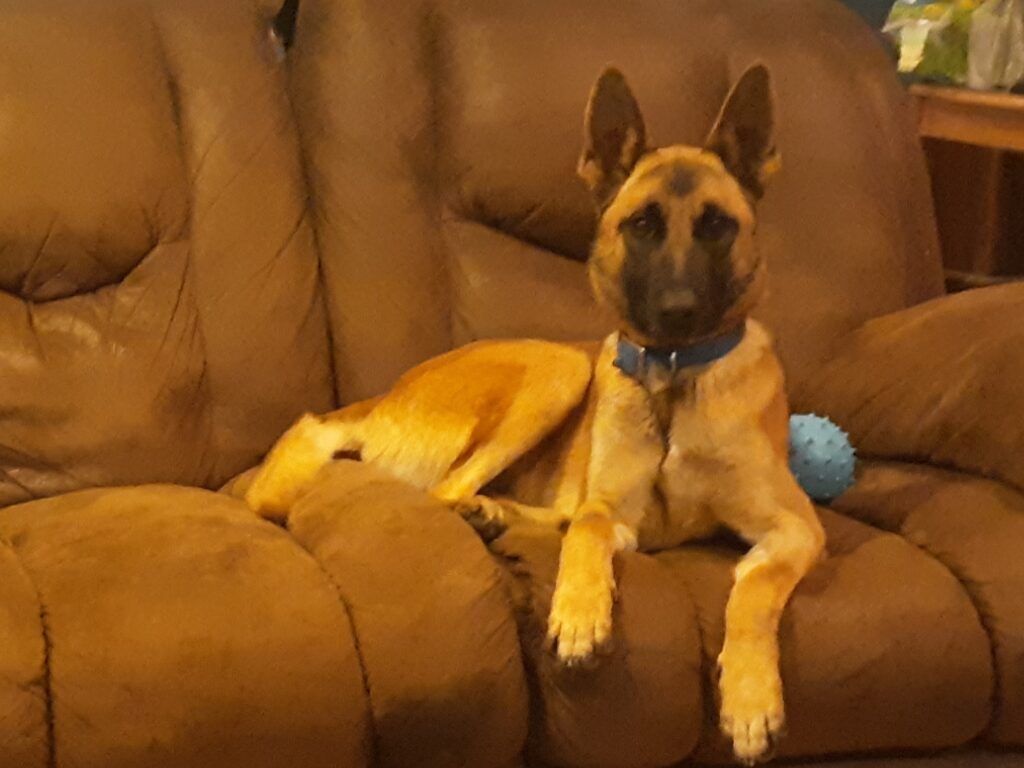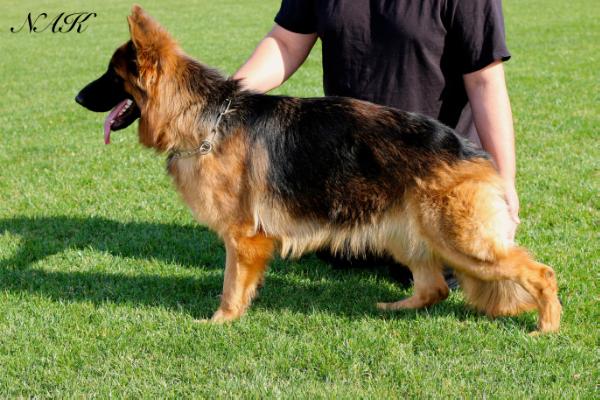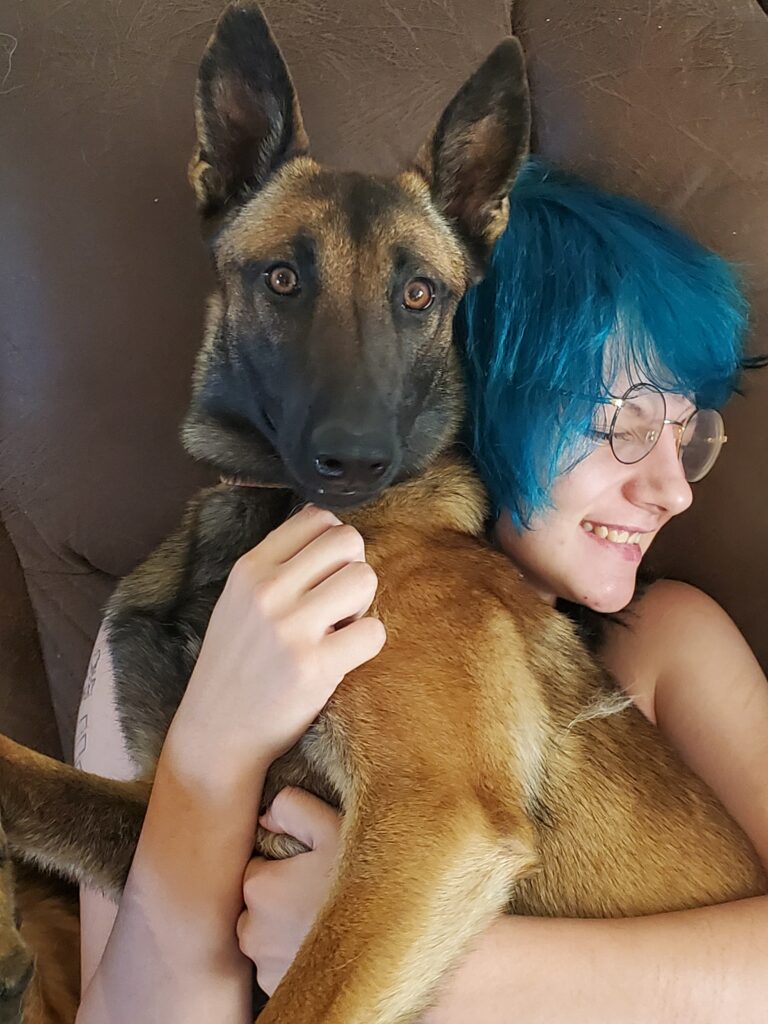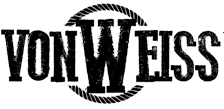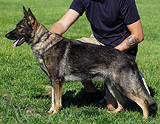
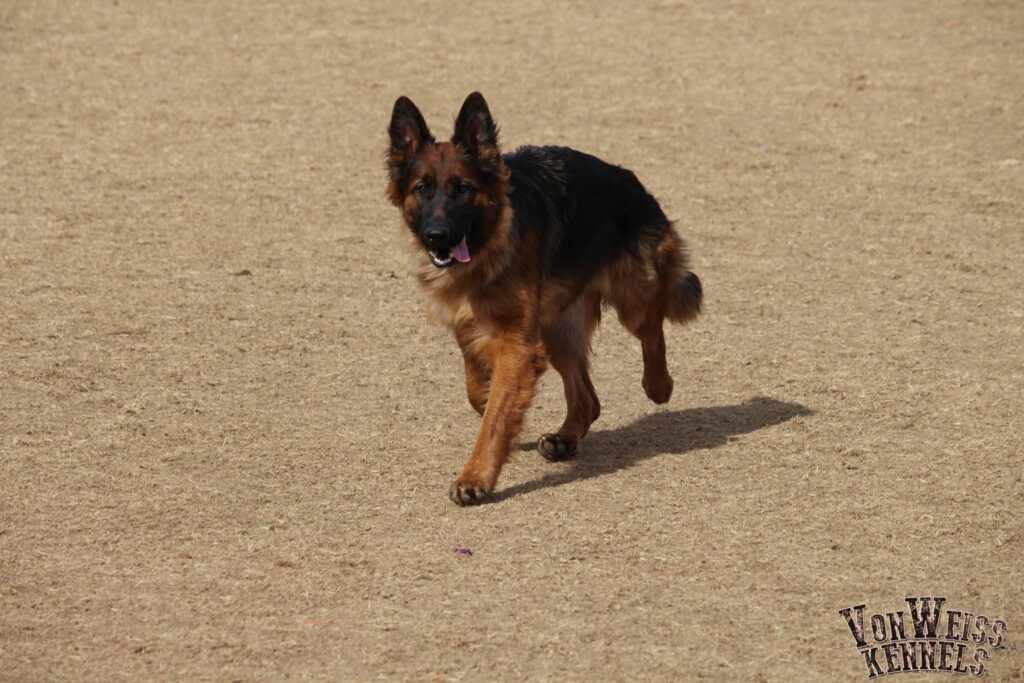
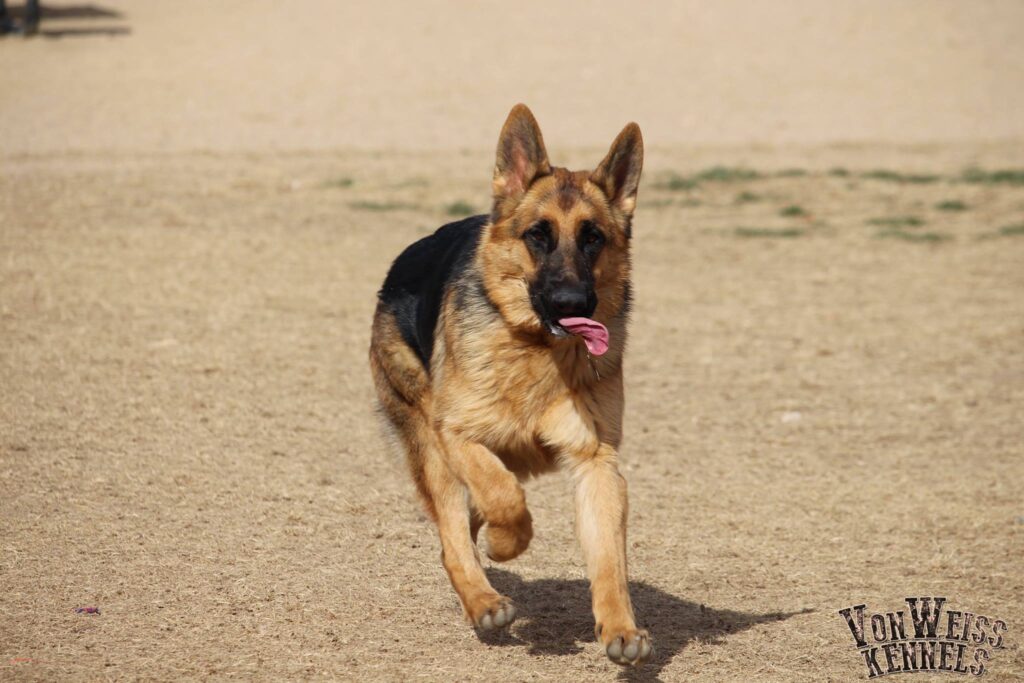
Breeding is not an easy task. It takes a great deal of knowledge, time and patience. To start a great breeding program, you must first know that the bloodline you are working with is worthy. The bitch needs to be tested and bred approved to make sure she is able to have puppies with safety to her and the pups. Do not make the mistake of thinking that if a bitch has titles and an awesome dog all around could be a good breeding bitch. It is important yes, but there is much more to worry about. Checking to see if there is any medical issues in her bloodline such as allergies, cancers, hips, etc. She must be able to have a good personality to care for her pups, a good reproductive system, including the ability to give birth to the pups, (a brood bitch). A brood bitch means she as a large enough uterus for the pups to fit through with ease and not worry about weather a puppy will get stuck in the canal or not.
Once the bitch and the sire “tie”, (mate), you can determine whether or not the tie took by having a pregnancy test done on the bitch in 30- 35 days. Once there is a confirmation, the bitch needs to be put on puppy food to aid in the nutritional need of the pups, to grow. This is when she will eat like a horse. Her food intake will increase 20% or more during the last 30 days. She will get very picky the last few weeks and smaller meals and more frequent feedings will be needed.
When the bitch is 50 days pregnant, it is time to take x rays to see how many pups she is carrying and to see any potential problems. This is the time to start to prepare for the “whelping”. Whelping is the birth process of the pups and the puppies are called whelps once they are born. She will start to nest and look for places to give birth in. A whelping pen should be set up for the mother and she needs to be comfortable in the place you chose for her. It must be safe for the puppies and have heating lamps or pads to keep the whelps warm.
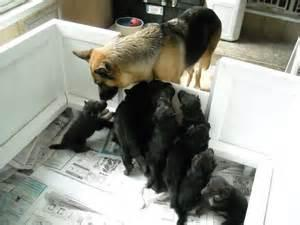
A week before whelping, it is important to take the bitches temperature twice a day. Normally, her temperature will be around 101 to 102. When her temperature drops to 98 or below, whelping will begin with 12 to 24 hours.
Once you see the temperature drop, it is time for you to prepare your paperwork near the whelping pen to take down each of the pup’s birth weight. You also need to have ribbons to tie around their necks to identify each pup. As well, a scale, sanitized scissors to cut the umbilical cord, dental floss to tie the umbilical cord, lots of towels to dry and clean the pups and a nose sucker to clear the pups nose and throat.
Usually you should let the mother tend to her pups before you get involved. Once she is done cleaning the pup, we take the pup, weigh it identify it, dry it, and put the whelp on the mothers teat so they get a great head start in feeding. The first fluid that comes from the mother’s teats is called colostrum. This is very important for the whelps and the need to have as much of it as they can for their immune system. The whelps need to nurse every two hours for the first 3 weeks. Then they start to go every 4 hours.
From this point on the whelps need to grow. A great deal of watching is involved until the pups are 1 month old. There is no sleeping during this phase! So much could go wrong and it is important that all eyes and ears are on the pups and the bitch.
The bitch will eat like a wolf due to nursing and she needs to be constantly checked to make sure she is not suffering from any infection or signs of eclampsia and other ailments such as Pyometra. I will not get into the possible dangers and problems the pups and the bitches could have, but it is very important to make sure you know what you are doing and what to watch out for. There are several deadly things that could go wrong and a good breeder needs to make sure they know what they are doing and knowledgeable to take on the task of breeding.
When you think of the time, effort and investment it takes to breed correctly, you will understand why a good breeder asks as much as they do for their pups.
Current Breeding Females:
*Please Click on the Females’ Names to see their individual Pages!*



